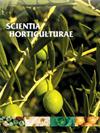洋葱收获后损失的最新情况和采用的补救策略
IF 3.9
2区 农林科学
Q1 HORTICULTURE
引用次数: 0
摘要
洋葱(Allium cepa L.)是日常烹饪中广泛种植的主食蔬菜,而收获的洋葱是有生命的实体,在储存过程中会发生各种物理化学变化,包括呼吸、减重、腐烂和发芽。由于水分含量高,新鲜洋葱很容易迅速变质,而处理不当又会加剧变质。贮藏是一个复杂的问题,受许多采前和采后因素的影响,包括灌溉、施肥、鳞茎成熟度、采收期、腌制技术、贮藏环境、包装材料和化学处理,导致总产量损失约 30-40%。同样,贮藏洋葱在生理、果实和激素水平上的损耗变化会促进发芽和微生物腐败。在洋葱病害中,只有镰刀菌会导致 50% 的储藏腐烂,而温度和湿度的升高又会加剧这种腐烂。洋葱在贮藏期间发生的这种变化对其质量和适销性都有很大影响。虽然洋葱的贮藏寿命是其固有的特性,但可以通过有效的收获前和收获后措施加以改善,如施用生长调节剂、确保营养均衡、施用纳米肥料、化学处理以及腌制。腌制在很大程度上有助于防止洋葱在储存过程中变质,并增加洋葱的全年供应量。此外,发芽、干燥和微生物腐败等问题也可以通过采用先进的技术,如完美的处理、改良的通风和受控的二氧化碳贮存气氛等,将其降到最低。在此,我们概述了用于最大限度减少收获后损失的策略,并讨论了在保持洋葱质量和延长储藏货架期方面的最新进展。本文章由计算机程序翻译,如有差异,请以英文原文为准。
An update on post-harvest losses of onion and employed strategies for remedy
Onions (Allium cepa L.) are widely cultivated staple vegetables in daily cooking while, harvested onions as living entities that undergo various physicochemical changes including respiration, weight loss, rotting, and sprouting at storage. Due to high moisture content fresh onions are prone to rapid spoilage which is aggravated by inappropriate handling. Storage is a complicated issue regulated by numerous pre- and post-harvest features encompasses irrigation, fertilization, bulb maturity, harvesting period, curing techniques, storage environment, packaging materials, and chemical treatments; causing about 30–40 % losses of total yield. Again, the attritional changes at physiological, fructant and hormonal levels of stored onions enhance sprouting and microbial spoilage. Among the onion diseases, only Fusarium causes 50 % of rotting at storage, which is augmented by elevated temperatures and humidity. Such an alteration of onions during storage has a robust effect on both their quality and marketability. Although the storage life of onions is an inherent trait, it could be improved through efficient pre and post-harvest practices such as application of growth regulators, ensuring balanced nutrition, nanofertilizers application, and chemical treatments in addition to curing. Curing largely helps to prevent spoilage at storage and increases the availability of onions around the year. Moreover, issues such as sprouting, drying, and microbial spoilage could be minimized by employing advanced techniques like perfect handling, modified ventilation and controlled storage atmospheres with elevated CO2 . Here, we present an overview of the strategies used to minimize post-harvest losses and discuss recent advances in preserving quality and extending the shelf-life of onions at storage.
求助全文
通过发布文献求助,成功后即可免费获取论文全文。
去求助
来源期刊

Scientia Horticulturae
农林科学-园艺
CiteScore
8.60
自引率
4.70%
发文量
796
审稿时长
47 days
期刊介绍:
Scientia Horticulturae is an international journal publishing research related to horticultural crops. Articles in the journal deal with open or protected production of vegetables, fruits, edible fungi and ornamentals under temperate, subtropical and tropical conditions. Papers in related areas (biochemistry, micropropagation, soil science, plant breeding, plant physiology, phytopathology, etc.) are considered, if they contain information of direct significance to horticulture. Papers on the technical aspects of horticulture (engineering, crop processing, storage, transport etc.) are accepted for publication only if they relate directly to the living product. In the case of plantation crops, those yielding a product that may be used fresh (e.g. tropical vegetables, citrus, bananas, and other fruits) will be considered, while those papers describing the processing of the product (e.g. rubber, tobacco, and quinine) will not. The scope of the journal includes all horticultural crops but does not include speciality crops such as, medicinal crops or forestry crops, such as bamboo. Basic molecular studies without any direct application in horticulture will not be considered for this journal.
 求助内容:
求助内容: 应助结果提醒方式:
应助结果提醒方式:


